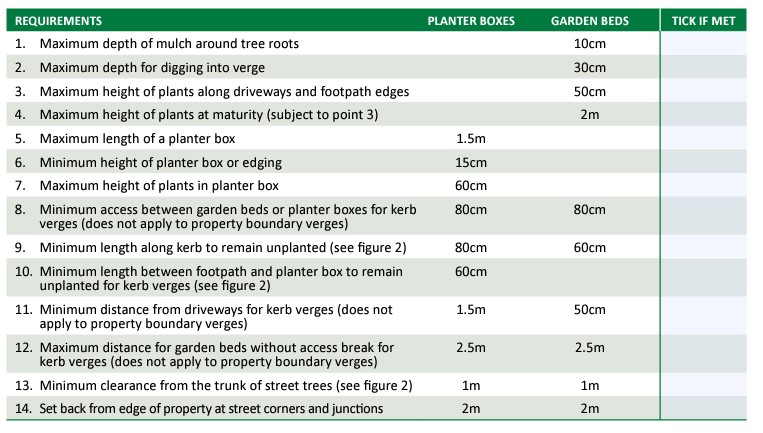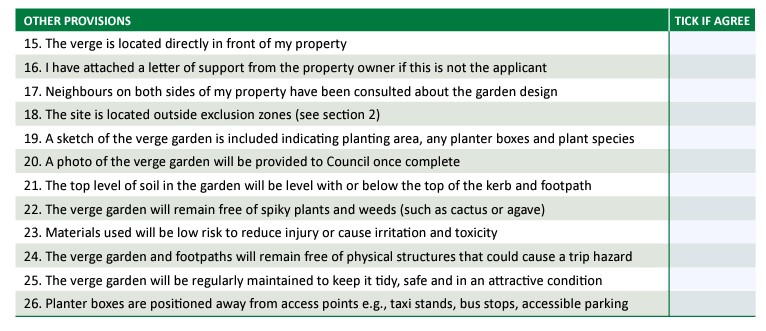Local landscape architect Barbara Schaffer is passionate about planting native vegetation in urban spaces to provide critical habitat for birds and insects and to promote community connections and wellbeing. In 2022, Barbara successfully applied for one of Waverley Council’s Small Environmental Grants to create native verge gardens on Brighton Boulevard in North Bondi, and now leads the local movement called “Rewild Bondi ”. In this month’s blog, Barbara tells us more about her verges and provides advice on how you can green up your own verge.
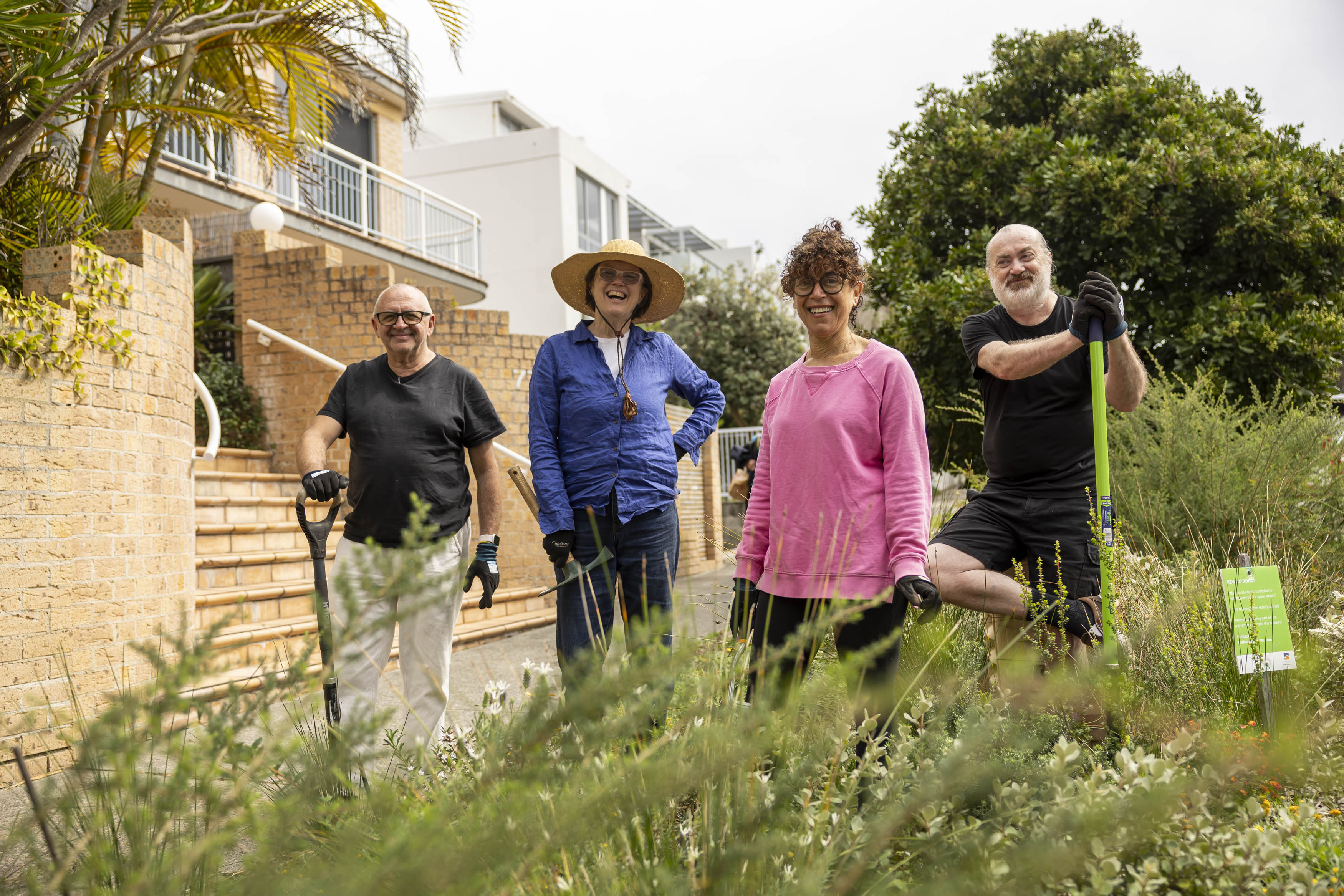
Barbara and her neighbours tending to the native verge gardens on Brighton Boulevard
What inspired you to start verge gardening, and what initial steps did you take?
I live on Brighton Boulevard, which has very wide grass verges. However, they were essentially monocultures, providing minimal environmental benefits, so I was keen to find ways to bring them to life.
During COVID, I began planting a habitat garden on the verge in front of our house with a diverse array of flowering native plants. I was surprised by how quickly the garden established itself, to the point that neighbours and passers-by began commenting on the transformation and the newfound beauty on the street. This was very encouraging!
Many of my neighbours also expressed an interest in creating verge gardens, so when I became aware of the Waverley Council Grant Program, I prepared a letterbox drop, inviting those neighbours who may be interested in creating a pollinator garden to meet me on the verge. Approximately twenty-five people came to the initial meeting, and we decided to apply for a Waverley Council Grant to help fund the work. Using Council’s Verge Gardening Guidelines we completed verge garden application form. Since then, numerous community working bees have been held, and passers-by have repeatedly commented on the transformation and the newfound beauty on the street!
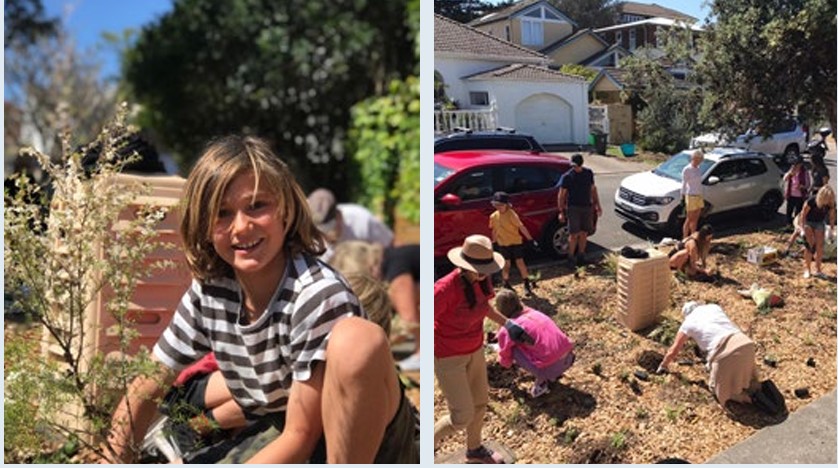
Neighbours working together to transform the verge
What are the benefits of turning a grassed verge into a native garden?
One of the key benefits is that verge gardening is a very simple way to address biodiversity loss. When one thinks of the cumulative impact of planting a whole street one verge at a time, the potential to create an urban habitat for birds, bees and butterflies is immense. Not only is the street more beautiful, with lots of flowering plants but all of a sudden there are noticeably many local pollinators. Additionally, as neighbours and friends come together to plant and tend to verge gardens, it sparks connections and positive environmental conversations among the community.

Neighbourhood planting day
What are some of the plants you chose for your verges and why?
We selected native plants that are indigenous to the area. The soil on the verges is particularly sandy, so it was important to select plants adapted to these conditions. We tried to use plants from the rare and endangered Eastern Suburbs Banksia Scrub community. There is a beautiful selection from this plant community that flower at different times.
As mentioned, we also followed the Waverley Council’s Verge Guidelines, which specify a height limit of 2m for verge garden plants. Some of the plants we chose included:
Shrubs
- Acacia ulicifolia
- Baeckea imbricata
- Bauera rubiodes
- Correa alba
- Epacris longifolia
- Grevillea sericea
- Leptospermum sp
- Philothica myoporoides
- Prostanthera ovalifolia
- Westringia fruticosa
Ground Covers
- Actinotus helianthix
- Brachyscome multifida
- Chrysocephalum apiculatum
- Ficinia nodosa
- Scaevola aemula
Now established for over a year, I have noticed many more insects, birds, bugs and butterflies, interacting with native flowers. It seems that there is a substantial increase in local biodiversity.
As the garden grows, we have been getting so much positive feedback from passers-by, as well as a great sense of social connection with all of us who have participated.
 Some approved plant species (L-R) - Prostanthera Ovalifolia, Acacia Ulicifolia, Actinotus Helianthi
Some approved plant species (L-R) - Prostanthera Ovalifolia, Acacia Ulicifolia, Actinotus Helianthi
What advice do you have for others who might like to try to create a verge garden?
If you are thinking about it, please do it. It is so rewarding and gratifying! You can go it alone on your own verge or join with neighbours.
Plant densely, that is, at least 8-10 tube stock plants per m2. Greater plant density will help the garden establish quickly and shade any spontaneous unwanted plants. Also, Small birds like dense vegetation to hide from predators.
I also recommend using hardwood mulch to a depth of at least 50mm. This will help keep the moisture in the soil, reduce how much you need to water and help limit weed growth. Mulch also increases the nutrients and biodiversity in the soil.
Our Brighton Boulevard project has since been featured in the NSW Government's Biodiversity in Place Framework, which provides a practical guide to ensuring our urban areas are nature-positive and support urban habitats. This applies to verges, backyards, balconies, public spaces, and rooftops—no space is too small to contribute to biodiversity!
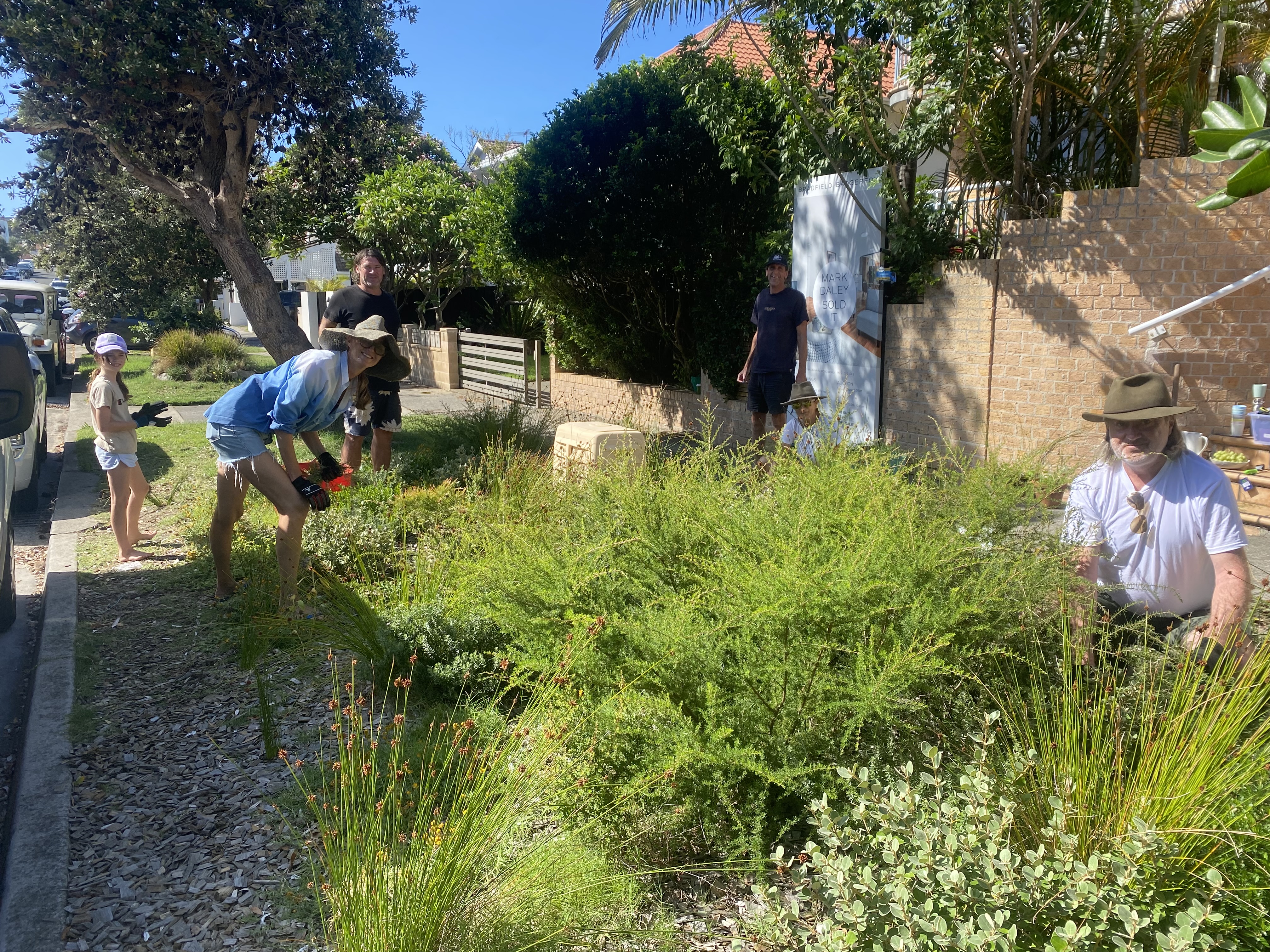
Helpful links for creating native verge gardens
- Check out Waverley Council’s Verge Garden Guidelines, which provide simple rules to follow to ensure your verge garden is safe and also include a list of suitable native species
- Read the Frequently Asked Questions on Verge gardening – or contact publicgardening@waverely.nsw.gov.au if you’re unsure about the process
- Check out the Waverley Habitat Gardening Guide for other gardening tips, and consider joining the Living Connections program for free native plants and advice
- For inspiration, read about other greening projects that support urban biodiversity in the NSW Government Biodiversity in Place Report.
- Read Council’s Urban Greening and Cooling Strategy, which aims to support 150 best-practice Verge gardens in Waverley by 2032
- Click here to hear Sandra tell us about her verge garden
Verge Gardening Requirements and Provisions list (from the Verge Gardening Guidelines)
